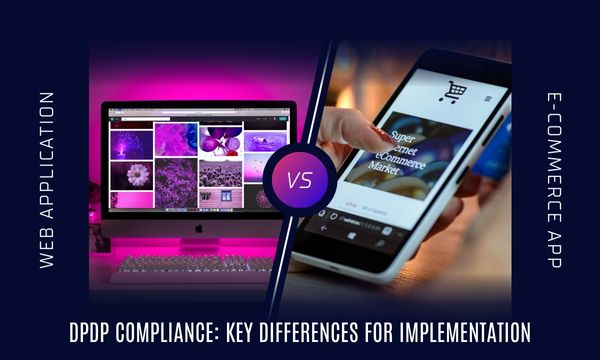
In today’s interconnected world, the manufacturing industry is rapidly embracing the Internet of Things (IoT) and Operational Technology (OT) to enhance productivity, streamline operations, and drive innovation. However, this digital transformation comes with a caveat: it opens up new avenues for cyber threats. With more devices connected than ever before, each serving as a potential entry point for malicious actors, the stakes are incredibly high. As a security expert and leader, understanding these IoT and OT security challenges and knowing how to mitigate them is paramount to safeguarding your manufacturing operations.
Did you know that in 2021 alone, cyber attacks on manufacturing companies surged by over 300%? How prepared is your organization to face such a barrage of threats? Imagine your entire production line coming to a standstill because of a ransomware attack. Or worse, what if critical intellectual property is stolen, putting your competitive edge at risk?
These aren't just hypothetical scenarios; they're real threats that manufacturers face every day. As we delve into the major IoT and OT security challenges in the manufacturing industry, we’ll explore how you can effectively mitigate these risks to safeguard your operations and maintain your competitive edge.
Key IoT and OT Security Challenges in Manufacturing
1. Legacy Systems and Incompatibility
Many manufacturing facilities still rely on legacy OT systems that were never designed with cybersecurity in mind. These outdated systems often lack basic security features, making them vulnerable to modern cyber threats.
Mitigation:
* Assessment and Upgrade: Regularly assess the security posture of legacy systems and develop a plan to upgrade or replace them.
* Network Segmentation: Isolate legacy systems from the main network to contain potential breaches.
2. Complexity and Scale of IoT Networks
The proliferation of IoT devices in manufacturing environments creates a vast attack surface. Each connected device represents a potential vulnerability.
Mitigation:
* Device Management: Implement robust device management protocols, including asset tracking and regular updates.
* IoT Security Solutions: Deploy specialized security solutions designed to monitor and protect IoT devices.
3. Lack of Standardization
IoT and OT devices come from various vendors, each with different security standards and protocols, leading to inconsistent security practices.
Mitigation:
* Unified Security Policy: Develop and enforce a comprehensive security policy that includes minimum security requirements for all devices.
* Vendor Assessment: Conduct thorough security assessments of vendors before integrating their devices into your network.
4. Insufficient Network Segmentation
Many manufacturing networks lack proper segmentation, allowing attackers to move laterally across the network once they gain access.
Mitigation:
* Network Segmentation: Create isolated network zones to limit the movement of attackers and contain potential breaches.
* Zero Trust Architecture: Adopt a Zero Trust approach, where every device and user is continuously verified.
5. Real-Time Data Processing and Analytics
IoT devices generate vast amounts of data that need to be processed in real-time. Securing this data flow while maintaining performance is challenging.
Mitigation:
* Data Encryption: Use strong encryption to protect data in transit and at rest.
* Secure Processing Platforms: Implement secure data processing and analytics platforms capable of handling real-time data securely.
6. Human Factors and Insider Threats
Employees, contractors, and other insiders can inadvertently or maliciously compromise IoT and OT security.
Mitigation:
* Training and Awareness: Provide regular cybersecurity training to all employees.
* Access Controls: Implement strict access controls and monitor user activities to detect and respond to suspicious behaviour.
7. Inadequate Security Monitoring and Incident Response
Traditional IT security monitoring tools may not be effective for IoT and OT environments, and many manufacturers lack specialized incident response plans.
Mitigation
* IoT/OT-Specific Monitoring: Deploy security monitoring solutions tailored for IoT and OT environments.
* Incident Response Plan: Develop and regularly update a comprehensive incident response plan that addresses IoT and OT-specific threats.
8. Vulnerability Management
IoT and OT devices often have vulnerabilities that can be exploited by attackers. However, patching these devices can be difficult due to operational constraints.
Mitigation:
* Vulnerability Assessments: Conduct regular vulnerability assessments to identify and address weaknesses.
* Timely Patching: Implement a robust patch management program, and when patching isn’t feasible, apply compensating controls.
Conclusion
As the manufacturing industry continues to integrate IoT and OT into its operations, understanding and mitigating the associated cybersecurity challenges is crucial. By addressing issues such as legacy system vulnerabilities, network complexity, lack of standardization, and inadequate monitoring, manufacturers can significantly enhance their security posture.
Effective risk management involves not only implementing advanced security technologies but also fostering a culture of security awareness and continuous improvement. By taking proactive measures to secure IoT and OT environments, manufacturers can protect their operations, safeguard sensitive data, and ensure business continuity in the face of evolving cyber threats.
Now is the time to fortify your manufacturing operations against cyber threats. Assess your current security practices, identify vulnerabilities, and implement robust risk management strategies. Engage with cybersecurity experts to develop a comprehensive plan tailored to your specific needs. By prioritizing cybersecurity, you can secure your digital future and maintain a competitive edge in the manufacturing industry.



